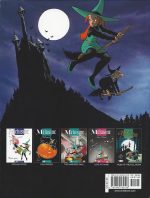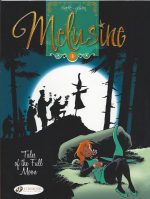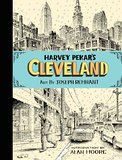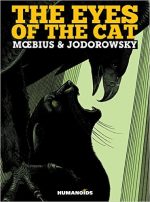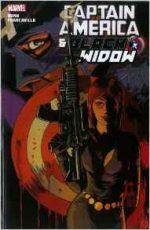
By Cullen Bunn, Francesco Francavilla & various (Marvel)
ISBN: 978-0-7851-6528-6
The Star-Spangled Avenger was created by Joe Simon & Jack Kirby at the end of 1940, confidently launched straight into his own title. Captain America Comics #1 was cover-dated March 1941 and made the flag-draped hero an unstoppable, overwhelming overnight success.
The absolute and undisputed star of Timely Comics’ “Big Three†(the other two being Human Torch and Sub-Mariner), Cap was also amongst the very first to fade as the Golden Age ended.
With the Korean War and Communist aggression gripping the American psyche, freedom fighting Steve Rogers was revived in 1953 – along with Torch and Subby – for another brief tour of duty before quickly sinking back into obscurity…
A resurgent Timely – now calling itself Marvel Comics – drafted him again in Avengers #4. It was March 1964 and Vietnam was just beginning to pervade the minds of the American public. This time he stuck around. Whilst perpetually bemoaning the tragic, heroic death of his young sidekick (James Buchanan Barnes AKA Bucky) during the final days of World War II, the resurrected Sentinel of Liberty stole the show; promptly graduating to his own series and title as well.
He waxed and waned through the most turbulent period of social change in US history, struggling to find an ideological niche and stable footing in a precarious and rapidly changing modern world. After decades of vacillating and being subject to increasingly frantic attempts to keep the character relevant, in the last years of the 20th century a succession of stellar writers finally established his naturally niche: America’s physical, military and ethical guardian…
In continuity terms, Cap is a rough contemporary of Natasha Romanoff (sometimes Natalia Romanova): a Soviet Russian spy who came in from the cold and stuck around to become one of Marvel’s most successful female stars.
The Black Widow started life as a svelte, sultry honey-trap during Marvel’s early “Commie-busting†days, battling against Iron Man in her debut exploit (Tales of Suspense #52, April, 1964).
She was subsequently redesigned as a torrid tights-&-tech super-villain before defecting to the USA, falling for an assortment of Yankee superheroes – including Hawkeye and Daredevil – and finally becoming an agent of SHIELD, freelance do-gooder and occasional leader of the Avengers.
Throughout her career she has always been considered ultra efficient, coldly competent, deadly dangerous and yet somehow cursed to bring doom and disaster to her paramours. As her backstory evolved, it was revealed that Natasha had undergone experimental processes which enhanced her physical capabilities and lengthened her lifespan, as well as assorted psychological procedures which had messed up her mind and memories…
Despite always being a fan-favourite, the Widow only truly hit the big time after the release of the Iron Man, Captain America and Avengers movies, but for us unregenerate comics-addicts her printed-page escapades have always offered a cool yet sinister frisson of dark delight.
This particular all-action pairing collects Captain America (… and the Black Widow) #636-640 from November 2012 to February 2013, during which time Cap’s own title had become a team-up vehicle, with previous part-time partners including Bucky/Winter Soldier, Hawkeye, Iron Man and Namor.
A good deal of that period had been spent thwarting the schemes of a mysterious villain with incredible resources and astoundingly grandiose schemes. Her name was Kashmir Vennema and this book describes how she was finally brought low…
The tale opens in Central Park as the Black Widow meets a mole to secure crucial intel. Although she was apparently incarcerated by Cap weeks ago, Vennema is still murderously active and the files reveal her secret. “Kash†is a high-end broker: supplying arms, tech, information, people or whatever her elevated clientele desire. Her motto is “Infinite profit in infinite worlds†and her organisation plunders the entire multiverse for suitable wares, before selling them to the worst despots of an uncountable number of Earths.
Moreover, the reason for her success is that everyone who works for her is a Kashmir doppelganger recruited from every alternate world…
Even as the Widow absorbs the implications of these revelations, in some other place a Doctor Doom dies whilst conducting business with a Vennema: their meeting ending in bloody assassination at the hands of infallible sniper Natasha Romanoff. This implacable Black Widow is working for an unknown client who plans to end the Vennema scourge forever…
And on our Earth at maximum detention centre The Raft, Hawkeye and Captain America interview the captive Kashmir and realise she is not of this Earth…
Acting on information received the Sentinel of Liberty later interrupts another buy between a Vennema and a terrorist group. The Secret Empire are looking to buy enslaved metahumans from other Americas but are driven off by the fighting-mad super-soldier. Tragically Cap is totally unprepared for the Black Widow to show up and murder Kashmir. Only after she tries to kill him too does he realise that she’s not his Black Widow…
Things look pretty bleak until she is suddenly taken out by her own counterpart, but the ‘Superhero Horror’ only increases when Vennema Multiversal HQ realises the deal has gone sour and the supreme “Kash†orders all evidence dumped. That involves a dimensional transport trap which lands Cap, Natasha and the killer Widow in a dustbin dimension where all Vennema’s failures and embarrassments end up…
Forging an uneasy alliance with the other Natasha, Cap goes scouting and walks into a catastrophic war amidst the ruins…
‘Tripod Terror’ sees the heroes ferociously battling crazed survivors of other cover-ups, unaware that Kash has despatched her metahuman Hunt Squad – culled from numerous worlds – to ensure their destruction, but the tables are about to be turned thanks to the ‘Raging Reptiles’ of alternate Earth inmate Curt Connors.
This plane’s Lizard is also its Doctor Octopus and he has redemption in mind. He only thought to help his people after a great war but his meddling resulted in a planet of monsters…
Now as the Hunt Squad attacks, Connors buys time for Cap and the Widows to escape, plunging into uncontrolled inter-dimensional chaos and fetching up on a myriad of incredible alternates before finally finding the mystery client who ordered the hits on the assorted Kashmirs.
She has her own team of oddly familiar metahuman champions and wants to dismantle Vennema Multiversal. With Captain America and two Black Widows ‘Taking it to the House’, the hostile takeover is brief and very bloody…
But when the dust at last settles is the convoluted interconnected web of Realities actually a better, safer place?
A dazzling display of pure Fights ‘n’ Tights razzamatazz, this short, sharp and super-heroically sweet team-up tale from scripter Cullen Bunn and illustrator Francesco Francavilla captivatingly capitalises on the popularity of the filmic iterations of these particularly long-lived metahuman marvels whilst playing delicious games with the established comics continuity. The end result is a fast and furious treat all action addicts will be unable to resist.
© 2012, 2013 Marvel Characters, Inc. All rights reserved.

